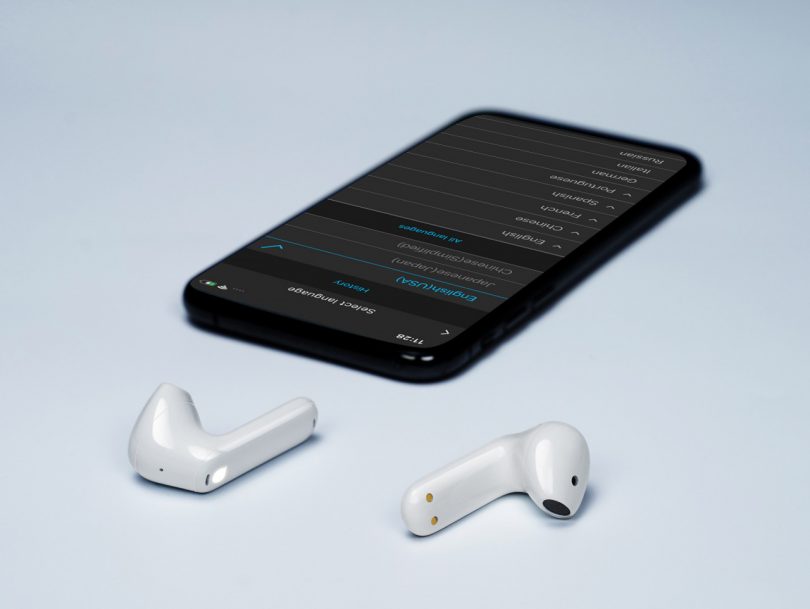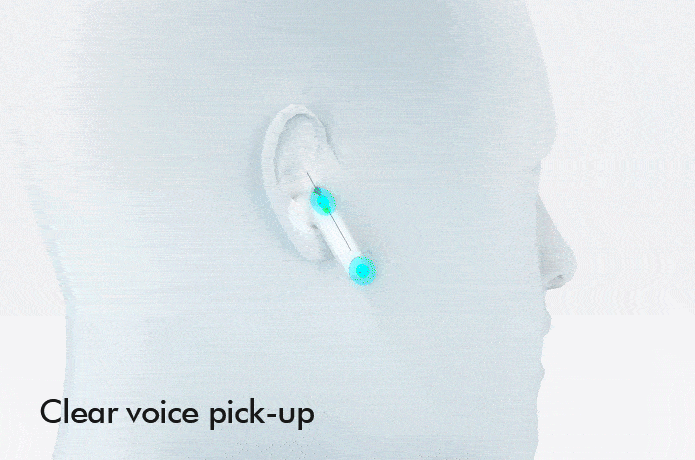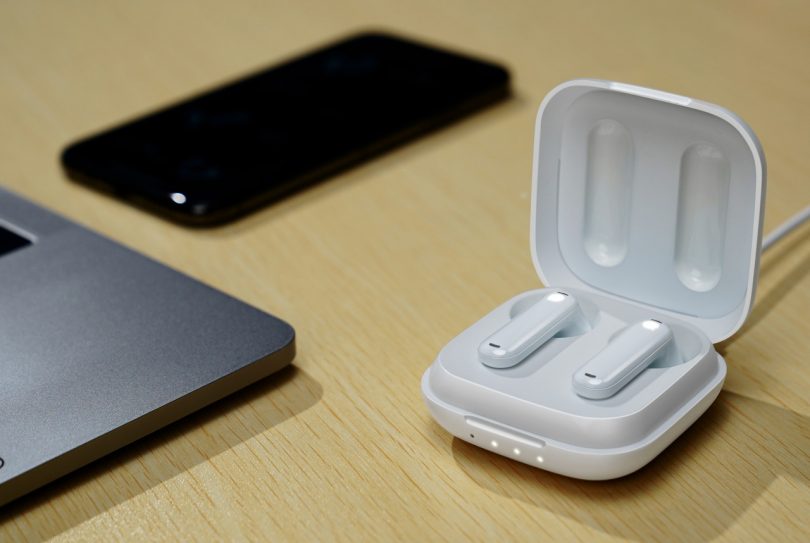The following post is brought to you by Timekettle. Our partners are hand-picked by the Design Milk team because they represent the best in design.
As someone with an extensively stamped passport, it’s been commonplace to find myself in situations where the lanes of communications operate more like a cul-de-sac rather than a two-way highway. While language barriers can be traversed, there are numerous instances where mutual comprehension is required to communicate intent and establishing a connection. Which makes the swiftly developing technologies of realtime language translation one of the most exciting developments happening today.
One of the more promising innovators in this field of cross communication tech is Timekettle, a hardware+software company founded in 2016 that has leveraged artificial intelligence to turn the dream of realtime inter-language communication into a reality with language translating earbuds.
Timekettle first staked its place within the industry back in 2018 with the release of their WT2 Plus Translator Earbuds, a device engineered to translate speech in realtime and sporting a design similar in form and fit to earbuds from the likes of Apple and Samsung. Still, the Timekettle team recognized there was room for improvement, specifically with the goal of eliminating the extended staccato-like pauses required for their technology to operate, and deliver a more natural, fluid communication between two parties in realtime.
Their latest Timekettle WT2 Edge arrives as the first integrated simultaneous and bi-directional translation wearable using artificial intelligence to deliver an entirely hands-free experience requiring as little as half a second between speech to translate 40 languages with up to 95% accuracy.
We spoke to Timekettle Technologie’s Global Sales Director, Alex Qin, to offer further insight about the company’s latest WT2 Edge:
The WT2 Edge builds upon the original solutions established by the WT2 Plus. How did the original design inform the improvements made to the Edge?
Good question! The WT2 Edge was improved according to the feedback offered by many users of the WT2 Plus, specifically that users wanted the ability to immediately chime in during pauses when the person they were conversing with had stopped talking. The WT2 Plus only supports single-directional translation; one side has to wait for the other to finish speaking. Real conversation unfolds as a back-and-forth dialogue, therefore we went out to design a bi-directional translation device allowing two sides to speak at the same time, delivering multilingual conversation closer to natural conversation.
We also heard from WT2 Plus users the earbuds could occasionally mistakenly translate voices from nearby speakers. Our ‘Simul Mode’ works best in a quiet environment, so unsurprisingly our users hoped for a wider scope of applications and scenarios. Developing a device that could clearly distinguish the speaking sentences with intrusive ambient noise – or someone speaking nearby is a challenge. But with the WT2 Edge we were able to solve this problem by applying a z-vector (measuring depth) voice algorithm alongside dual-mics built into each earbud. This allowed us to integrate a smart noise reduction technology that gives each earbud the ability to detect sounds within a 25 centimeter radius (approximately 10-inches) from the front mic while filtering other sounds before sending a detected voice to our engine for translation.
It would be easy to mistake either the Plus and Edge as earbuds intended for listening to music and conversing over a call. What are the inherent differences of a wearable intended for translation/conversation versus something like Apple AirPods?
The WT2 Edge earbuds are designed strictly for translation, and indeed it is different from traditional true wireless stereo hardware designed for music and phone calls. This is because the transmission of voice input and output for translation requires a high active response for two parties conversing at the same time. Secondly, WT2 Edge is a hardware and software powered product. The “Timekettle” App also plays a very important role in collaborating with voice transmission and processing, utilizing two algorithms working concurrently – one in the earbud, the other within the Timekettle App.
Noting the WT2 Edge is 33% smaller and 46% lighter than the WT2 Plus, could you tell us how this reduction was accomplished without significantly affecting battery life?
Actually, the battery life of the WT2 Edge has been affected by the incorporation of our z-vector voice algorithm. The algorithm is continually in operation. Even so, the WT2 Edge supports around 3 hours per conversation (the WT2 Plus can operate for 4-5 hours between charges). However, the Edge’s charging case can recharge the earbuds 5-6 times. We’re also continually optimizing the algorithm to reduce battery consumption to allow users to enjoy longer multilingual conversation.
One issue affecting any in-ear design is fit. Ergonomically, how does this new design ensure a secure fit?
In order to offer a secure fit, we’ve reduced the ear post, distributing the earbuds’ center of gravity for a more secure fit compared to the WT2 Plus. For people with ears that don’t comfortably accommodate the Edge, we may consider to provide an ear-hook as we did in WT2 Plus.
The WT2 Edge supports translation of 40 languages and 93 accents. Is the technology capable of distinguishing and translating vernacular accents (e.g. an American speaking with a New York accent vs someone with a Southern accent)?
We’ve added the ability for the WT2 Edge to not only identify voices from different countries, but also distinguish how the same language is spoken in different regions. For example, there are fourteen English accents, including English spoken with a British, American, Canadian, Austrian, Indian, Singaporean, South African, Filipino, Irish, Kenyan, Tanzanian, and Ghanian accent. We will continually add more, but we believe our AI voice recognition will improve over time with vernacular accents using our training system.
Simultaneous mode requires sharing one earbud each. Noting the pandemic has made sharing physical products a concern, is Timekettle investigating integrating UV light into the case to disinfect earbuds somewhere down the line?
Yes, we’ve considered the possibility. But according to our surveys, most people are using our earbuds within safe and close relationships. Therefore, a disinfecting UV light integrated into the case has not ranked as a highly requested feature yet.
The Timekettle WT2 Edge is scheduled to ship in April 2021, and is currently seeking crowdfunding support before launching officially. For additional information, check out timekettle.co.
from WordPress https://connorrenwickblog.wordpress.com/2021/02/10/timekettle-wt2-edge-widens-the-lanes-of-communication-in-realtime/







No comments:
Post a Comment